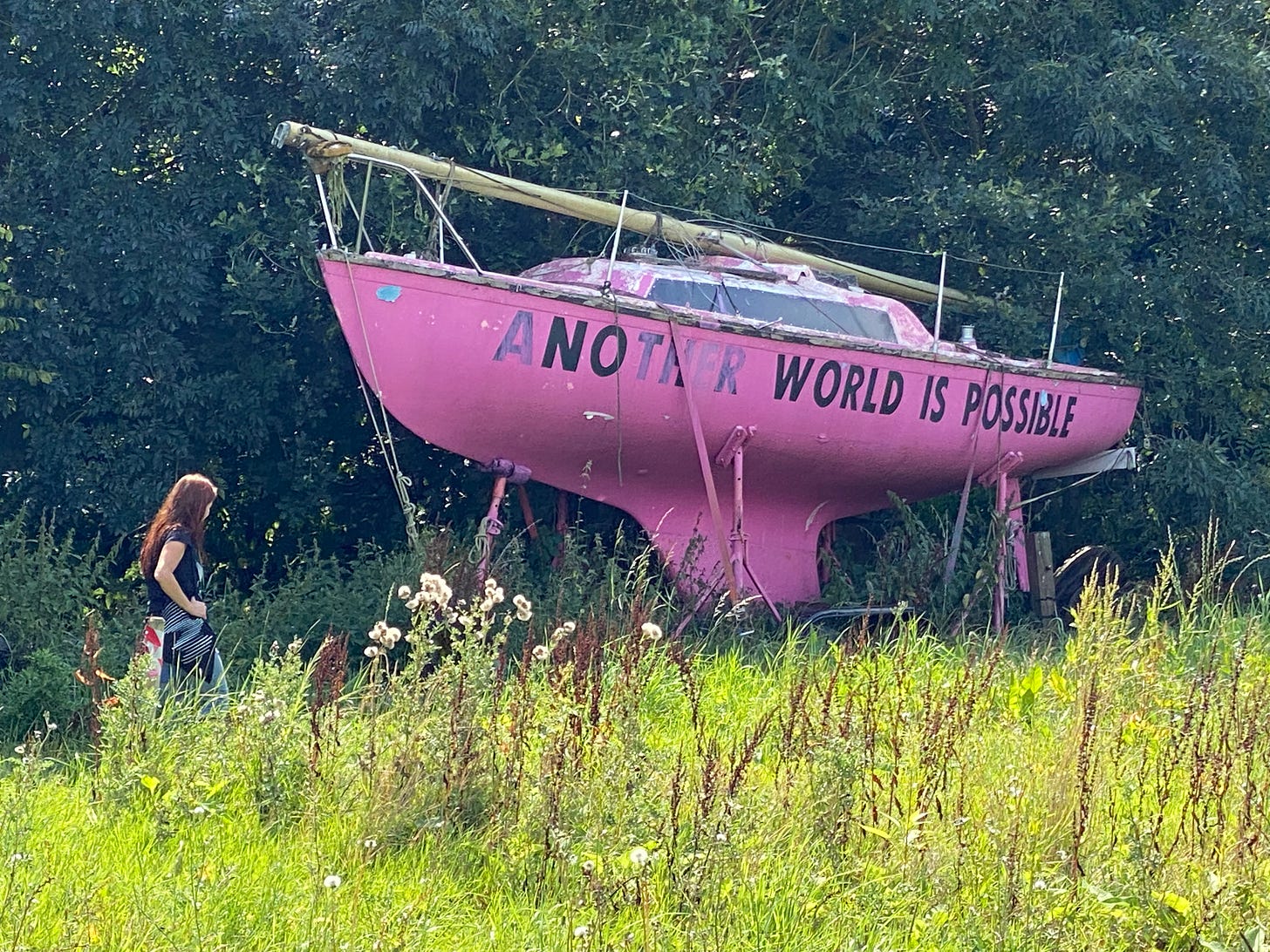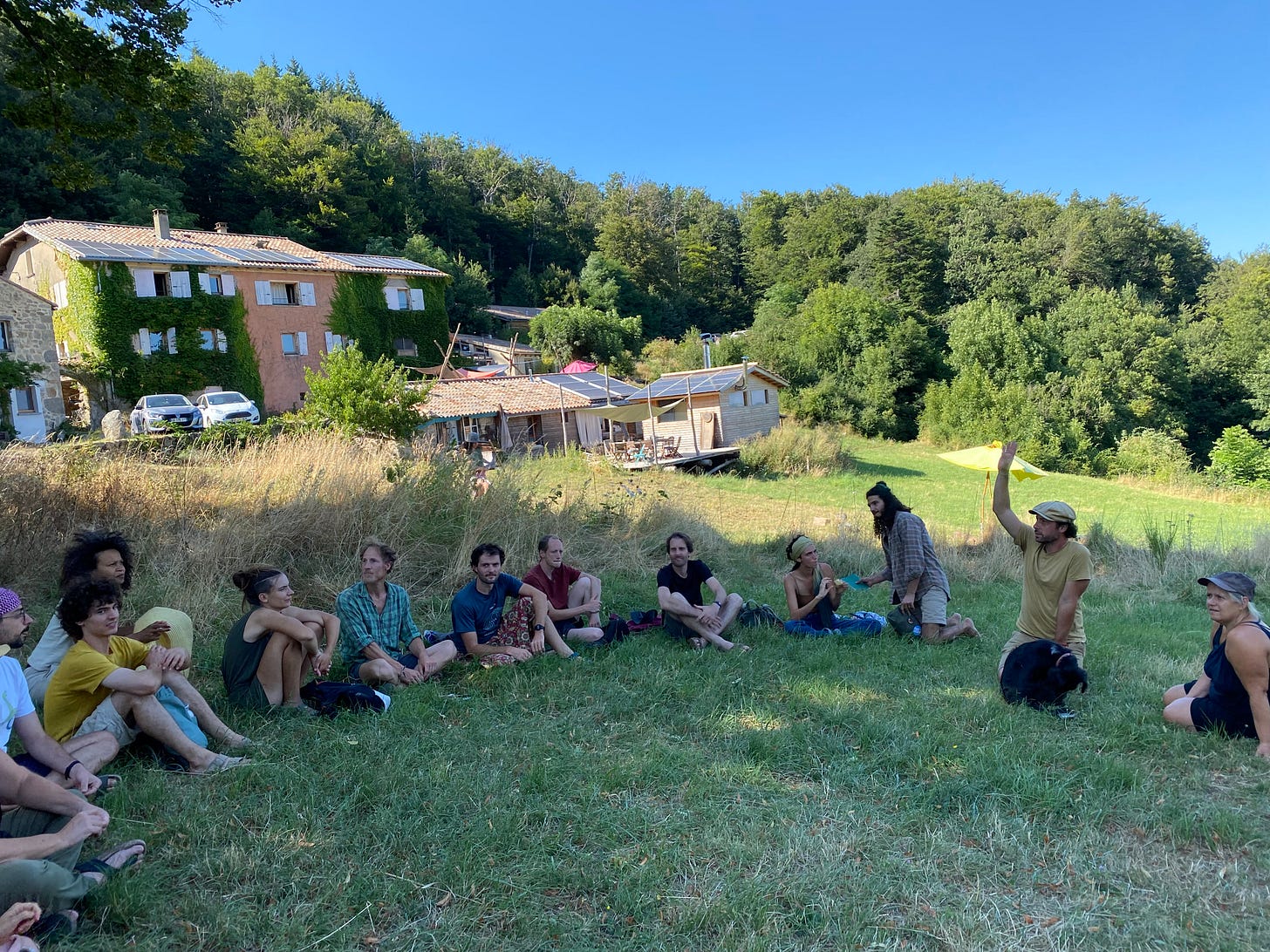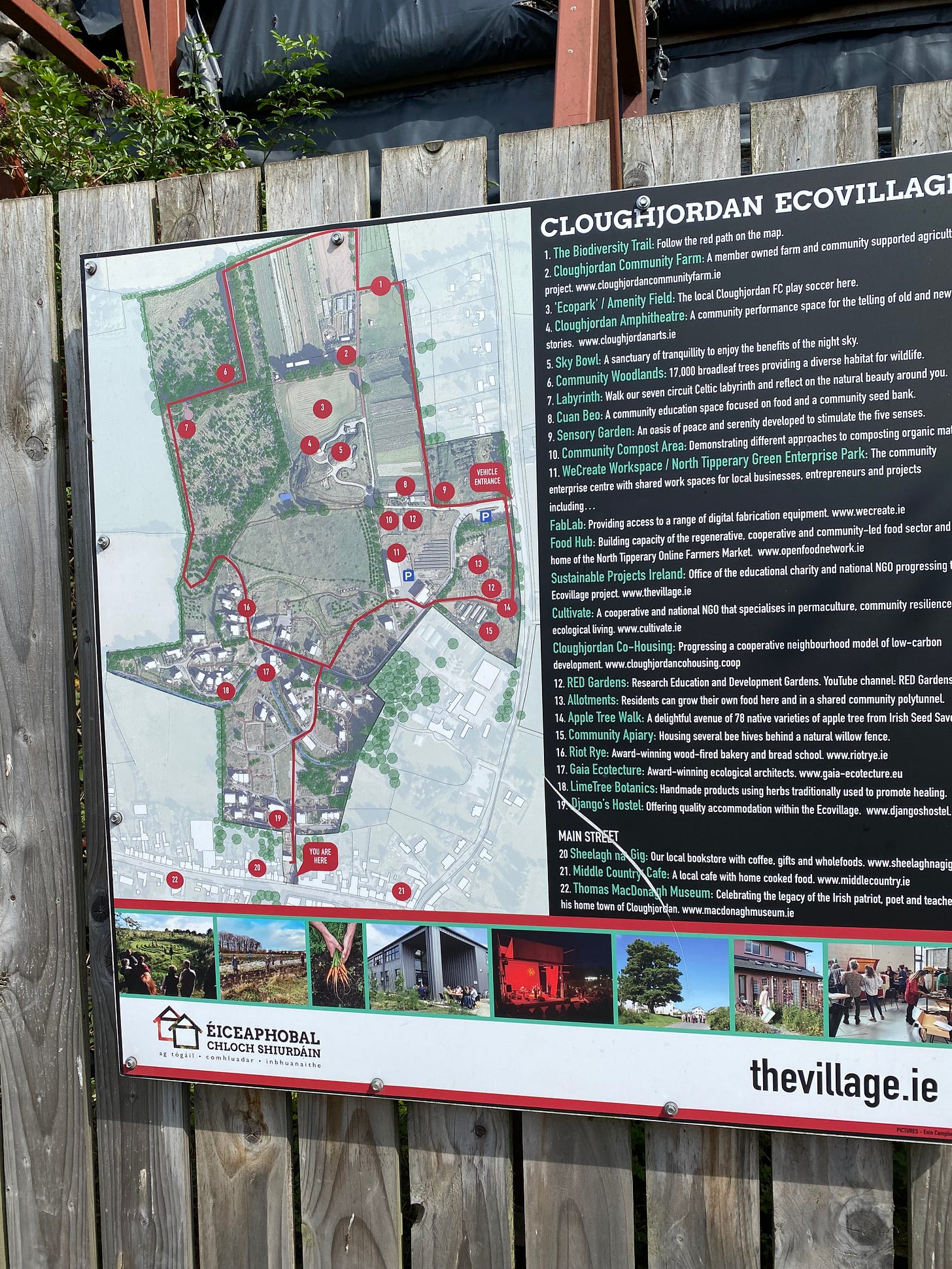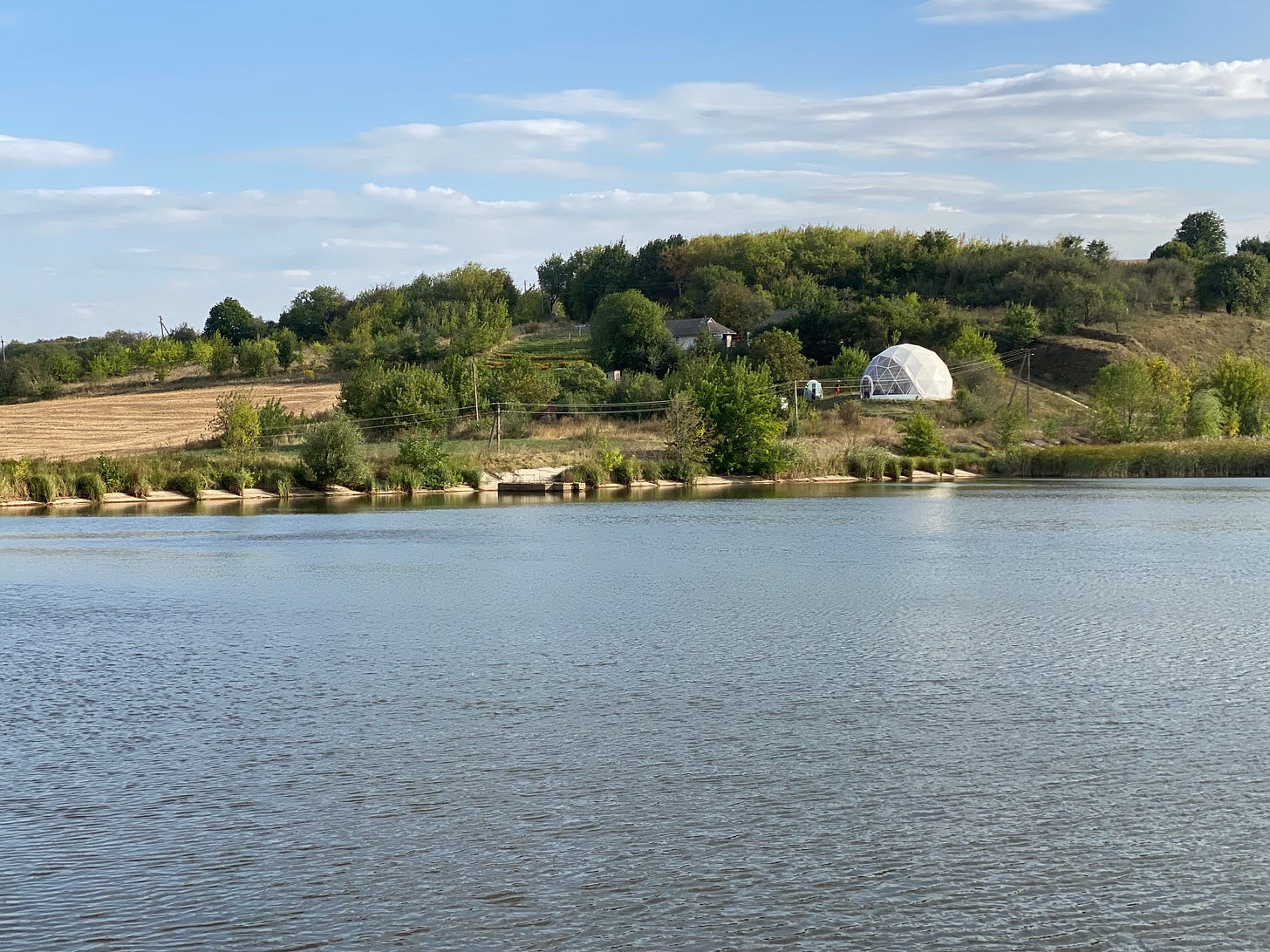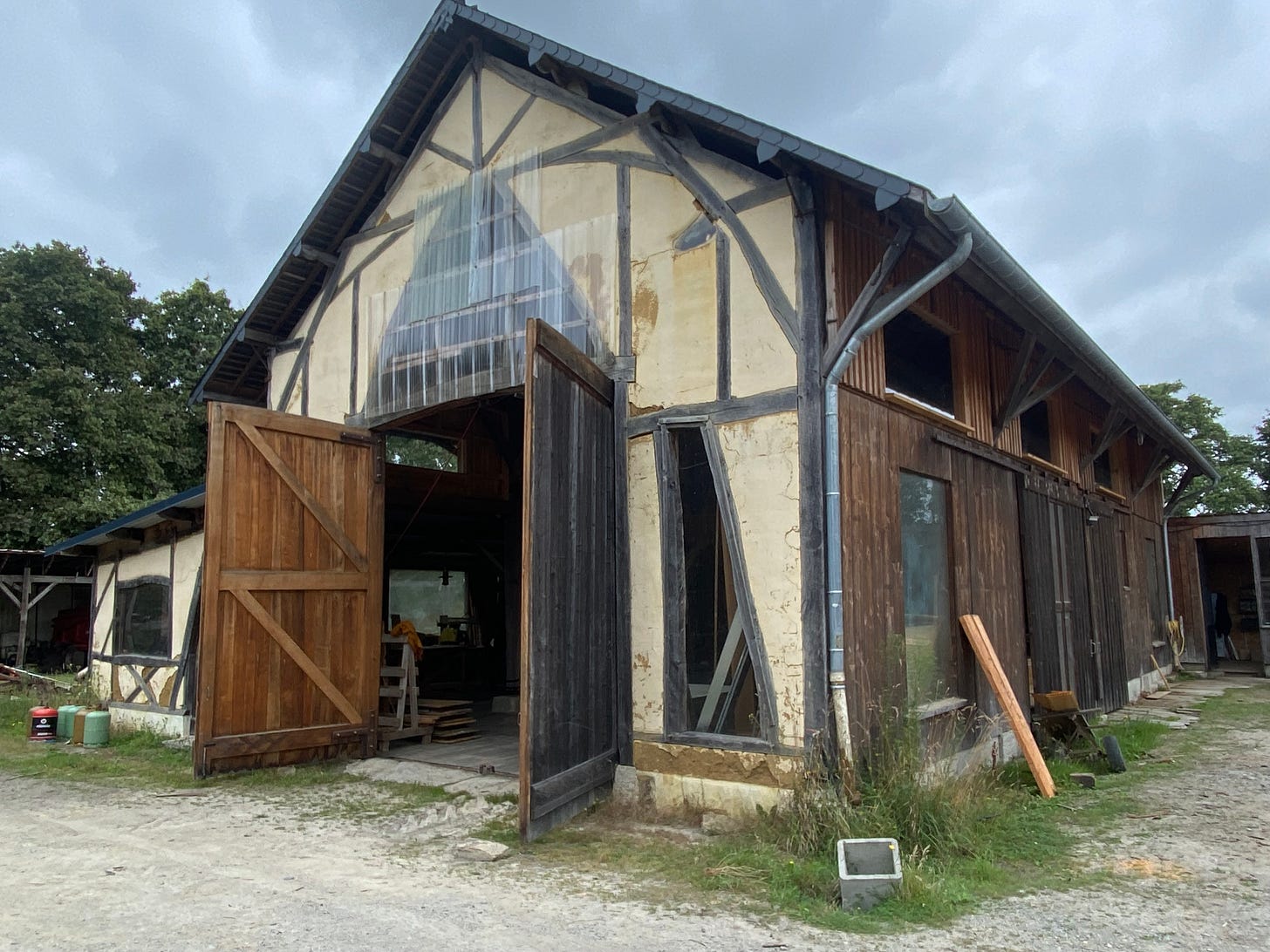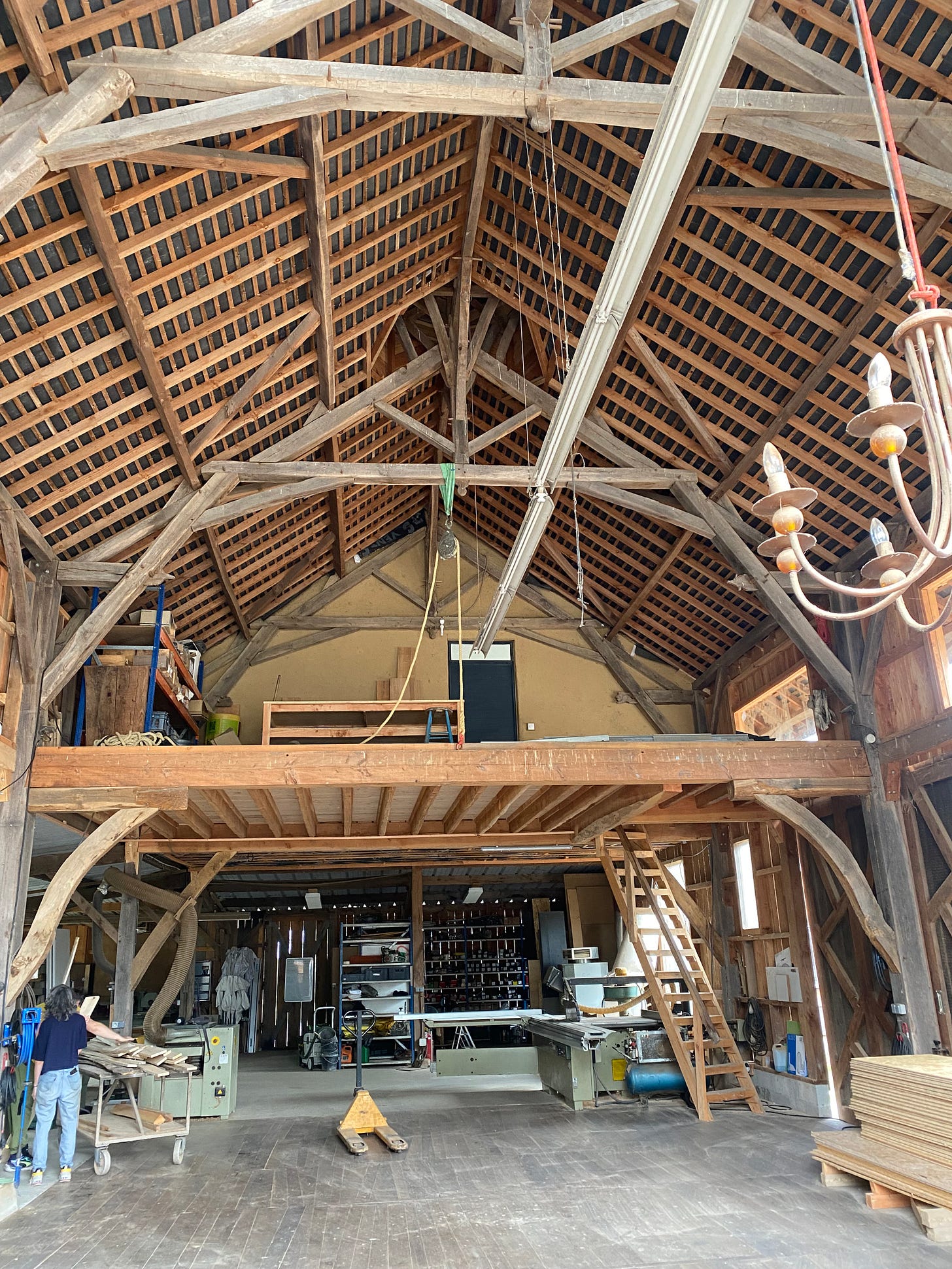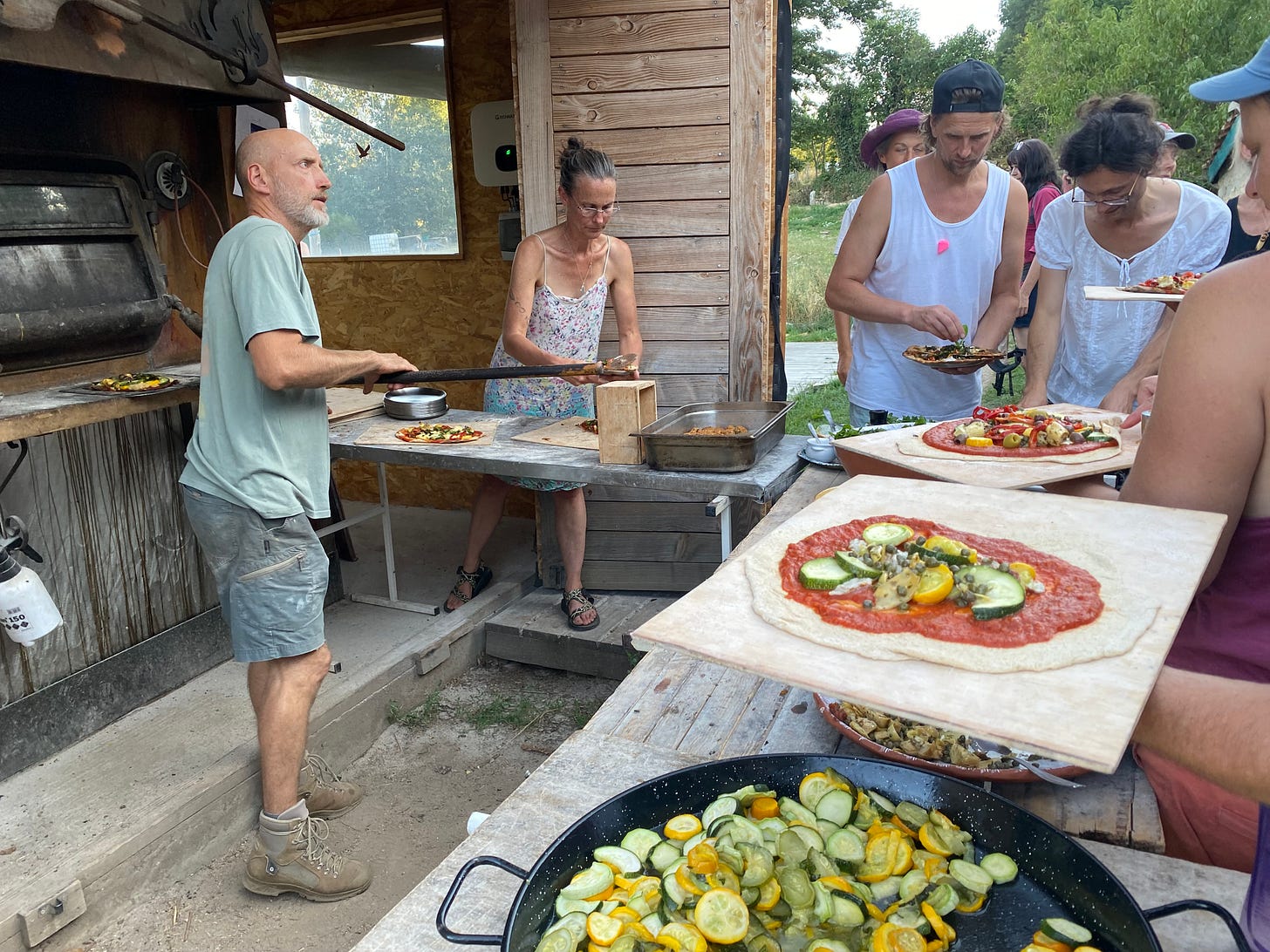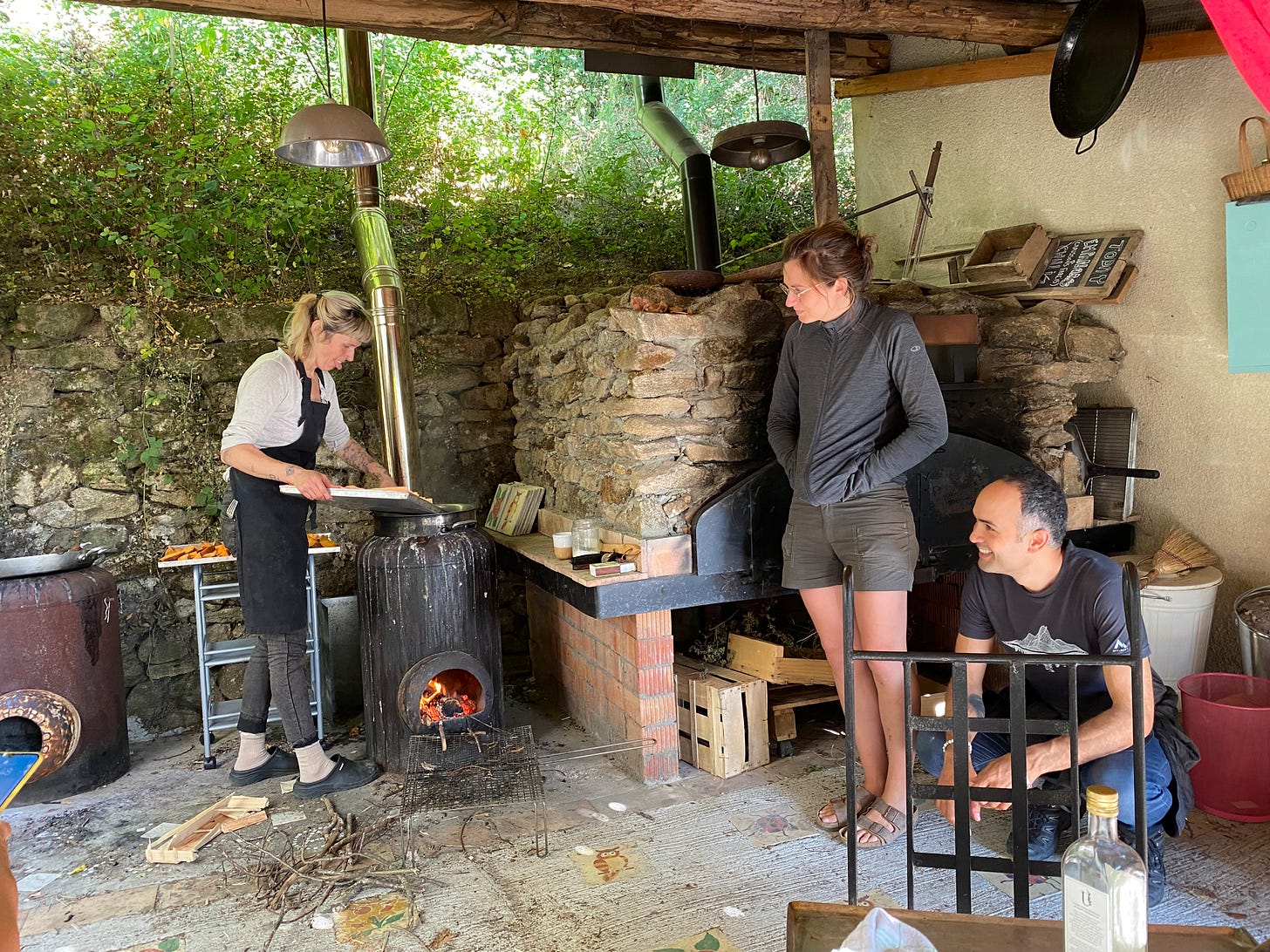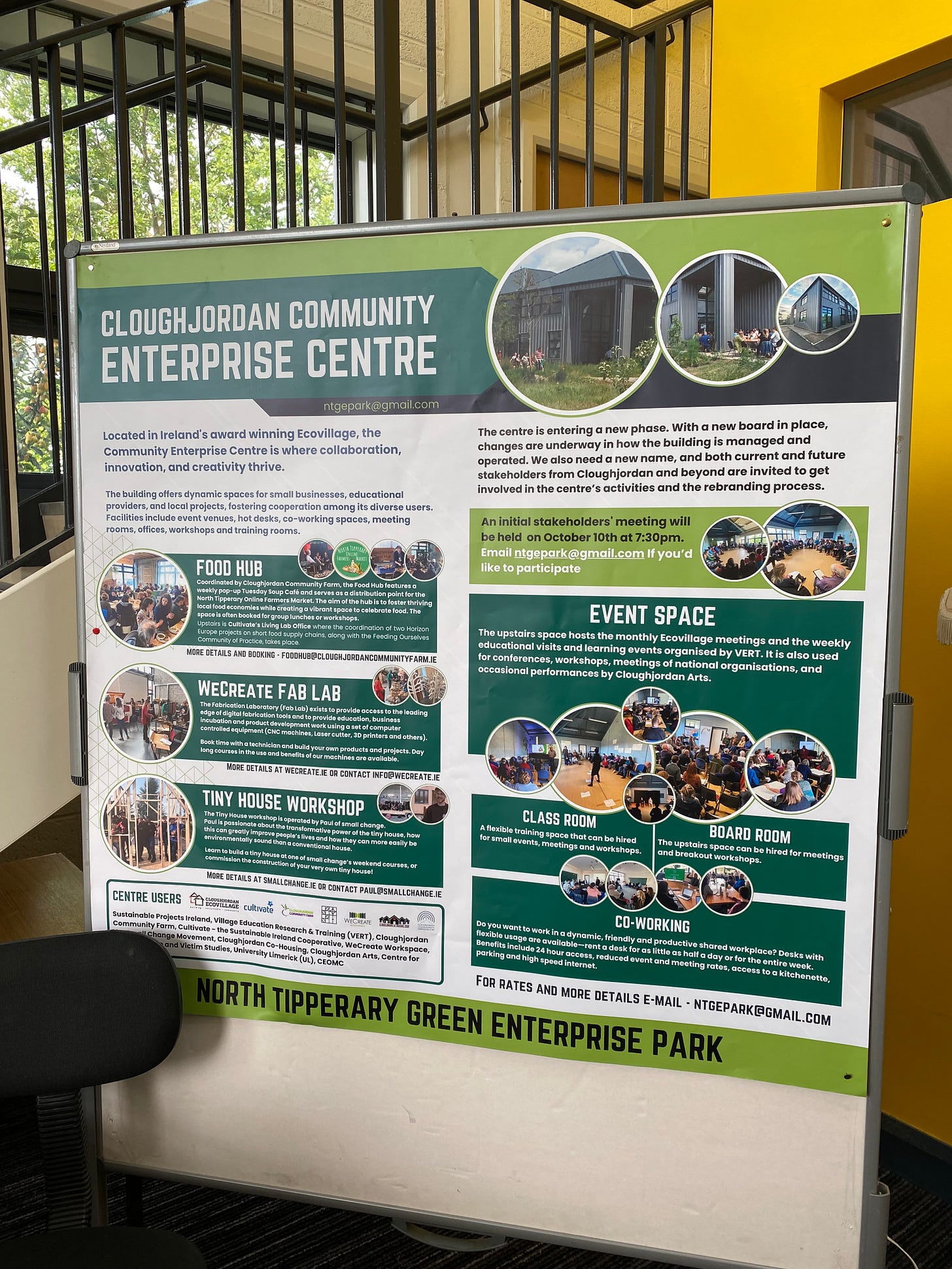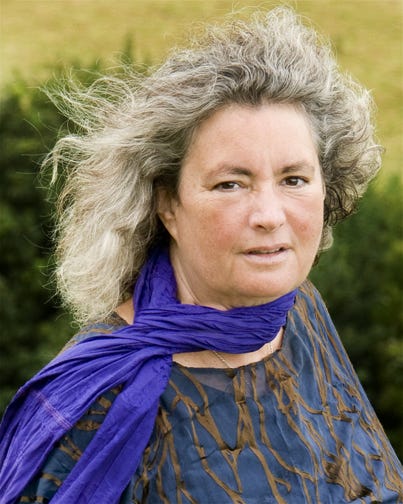Today, one of my friends in France asked me how I’m holding up given the current political situation here in the United States. Returning after a summer abroad, the general level of complete insanity here seems starkly evident. But what’s hopeful to me is how people are responding by resisting, by organizing, and by pulling together.
More and more people are forming groups, whether that’s affinity groups to take action together, larger organizations to coordinate action, or simply groups to strengthen a sense of local community and connection. And to my mind, that’s exactly what we need to do to counter fascism.
But working in groups has one essential drawback: it requires working with people. There’s a truth we don’t like to admit: that getting along with other people is difficult. Other people are notoriously annoying, contrary, pigheaded, stubborn, and unwilling to go along with what I think is best. They nurse their grievances, believe ridiculous things, and often refuse to just get with the program. We tend to idealize community, and many of us dream of an idyllic existence in the countryside, with abundant gardens, fruit trees laden with apples and pears, surrounded by like-minded people and good friends sharing resources and supporting one another. It’s a beautiful dream. I think we’d realize it more often if we could admit that it is actually one of the more difficult things human beings can attempt to do.
Diana Leafe Christian, who wrote the book Creating A Life Together on ecovillages and intentional communities, says that ninety per cent of them fail. That is a sad statistic. It represents enormous heartbreak, and many broken dreams. But they don’t fail because of some flaw in their food forest design, or a glitch in the solar cells. They fail because of conflict.
That’s why, on my travels this summer and last summer, I was grateful to visit a number of thriving ecovillages. When I think about some of the factors that lead to their success, I realize they are principles that can also apply to some of the many other groups and organizations we are presently involved in.
There’s a lot of overlap between the concept of an intentional community and an ecovillage. An intentional community might be urban or rural, a living community, a collective house, a cohousing community where people own their own dwellings but share common resources, a community that forms around a project or political action but also includes other types of sharing. An ecovillage might also be urban or rural, but it generally implies something larger than a household: a group or collection of households of varying types with some common values, commitment to some level of sustainability and ecological awareness, and some form of collective governance and cooperation. They range from funky collections of hand built houses made of logs, mud and straw, to upscale, gated communities with green infrastructure.
This year we taught in France, in an ecovillage called Grain et Sens, a bilingual community in the Ardeche, a beautiful, rural area of South Central France.
I visited Cloughjordan, a very different ecovillage planted on the edge of Cloughjordan village, deliberately sited so that it could integrate into an existing community that had been losing population, as so many rural communities are, and help revitalize it.
Last year, I taught a course in Social Permaculture at an ecovillage in Ukraine, in a peaceful part of the country by a placid lake, where young people are committed to create a life rooted in land and community even in the face of war.
I also paid a visit to La Zad, which means “The Autonomous Zone”, near Notre-Dame-des-Landes in northern France, in an area where local farmers had been resisting the construction of an airport for decades. Many had been bought out and left the land, but in the 2000s, climate activists joined them, squatting some of the abandoned farms, revitalizing them, and mounting opposition to the construction of the airport. They resisted a concerted attempt to evict them in 2012, and after Macron was elected, in 2018 the airport project was cancelled. The French government then mounted an assault on the community, attempting to drive out the squatters. Again, they resisted in some unique and creative ways. For example, they built a beautiful timber frame barn with exquisite craftsmanship sturdy, enough to last a thousand years, as an act of resistance to eviction. The barn can host gatherings, and also houses a sawmill fed by sustainable horse logging in the local forests that supplies timber to refurbish some of the old farmhouses and build new dwellings. La Zad has had its own internal conflicts, some of them intense, but it has weathered them and remains an inspiring example of both resistance and regeneration, with community enterprises such as forestry, construction, bakeries, food production and education, centered on a community committed to setting down roots in the land.
So, what are some of the factors that make for success in intentional communities? And might they also be important in creating groups and organizations that may not be as all-encompassing as living together, but might also need the skills of cooperation and collaboration? Below are four factors that come to mind. I’m sure they’re not the only ones but they’re the ones that seem evident at the moment.
1) Don’t be Doctrinaire!
Ecovillages and groups in general seem to work best when people share common values that become the standard by which actions, priorities and projects can be judged, but where people are also flexible and not doctrinaire. To live in community, we need to balance what we think is right with the understanding that others may have different ideas and opinions. At La Zad, I heard a tale of a group of radical vegans who, during the struggle, opened fences and disrupted the operations of a local farmer who up until that point had been a strong supporter of the activists and the resistance.
In any project that involves real life work and tangible things, like farming or building, there’s always some compromise between the ideal and the possible, between what we should do and what we actually can do. I’ve lived collectively for more than forty, years and it has had its ups and downs, including some devastating downs, but what has made it possible at all was a pragmatic decision we made at the beginning to pool some money and hire someone to do the basic cleaning once a week. Some members, at the time, believed that doing our own cleaning was a more moral and egalitarian stance. But realistically, I knew that our various careers, personalities, and lifestyles would result in constant arguments and a filthy house. At the time I was traveling more than half the year teaching and lecturing, and I knew myself well enough to predict that I would not come back from a long trip and cheerfully clean a toilet I hadn’t actually used for weeks. So, I made a feminist case, that housework is work like any other, not some special category, and that it should be respected and fairly paid. Had we not made that decision, our collective wouldn’t have lasted for a month!
2) Let People Have Areas of Autonomy:
Community seems to work best when people have areas in which they can make their own decisions and exercise their own agency. At Grain et Sens, for example, they grow a field of wheat, harvest it, mill it and run a successful bakery that provides bread for their community and for local farmers’ markets. That’s one business, run by one couple.
They run retreats and workshops, and rent out guest rooms in a gite, another business run by others. They grow an extensive garden. They cater the workshops from a wood-fired kitchen—yet another distinct business.
Each enterprise supports the others. They coordinate efforts together, but each is distinct, and each entrepreneur is free to set their own values and make their own decisions.
Even in a collective effort, people need to have the freedom to express their own values, make their own choices and be responsible for the impacts of those choices. Any organization that attempts to micromanage every aspect of every enterprise will simply create resentment and have difficulty functioning.
3) Have A Process for Conflict Resolution:
Conflict arises in every group of people, because we have differing ideas, goals, perspectives, desires and priorities, and because we are sometimes a bit inept in our communications with one another. We bring our personal baggage from our families, from other failed relationships, from the general battering of life into community, not always with good results. So communities do well to embrace conflict and decide in advance what kind of process might be used to resolve it.
Grain et Sens, for example, uses a feeling-sharing circle when conflict arises. People sit together in circle, pass around a talking stick or other sacred object, and whoever holds it can speak without being interrupted or challenged. Others listen, knowing they will get their turn. Everyone is encouraged to speak from the heart, to share their own feelings, not judgments or accusations, and listen from the heart.
Other communities might have a structure for mediation, use a restorative justice circle, or have some other process to address conflict. It may be less important which specific process you use, than simply to have one, ideally, put into place before you need it, and based on clear guidelines about what constitutes acceptable and unacceptable behavior.
4). Create Opportunities for Deep Connection and Bonding:
Groups and communities need what Diana Leafe Christian calls “Community Glue”, experiences which allow people to connect on a deep level and develop emotional bonds. Ritual and ceremony can serve this purpose. Often the most long-lasting and successful communities have a common, spiritual base. Creating and celebrating rituals together can be a way a community bonds, but even simple traditions, like a weekly, shared meal, or an annual olive harvest work weekend and party, can create opportunities to interact in different ways than our ordinary activities. If living in community isn’t fun, at least some of time, what’s the point? And even if you are organizing around some deeply serious issue, taking some time out to relax, play, go out into nature, or engage in a common project can help deepen and cement bonds of friendship and understanding. That bond will make the hard work of organizing, or the mundane work of running an enterprise, easier and more pleasurable.
These are some of the ideas I’ve gathered from my travels this summer. I’ve been thinking, writing and teaching about community skills for many years, and truly, I believe nothing is more important than improving the patterns of our interactions and collaborations. If you’re interested in learning more you might check out my book, The Empowerment Manual: A Guide for Collaborative Groups. (Gabriola Island, New Society Publishers, 2011). I also have an upcoming course online, Empowering Collaborative Groups, starting on September 30th, six Tuesdays, 6:00 to 8:00 PM Pacific Time. https://earthactivisttraining.org/social-permaculture/
I also highly recommend Diana Leafe Christian’s work. She lives at Earthaven Ecovillage, and her books and courses can be found at https://www.schoolofintegratedliving.org/diana-leafe-christian/
or on Facebook at https://www.facebook.com/diana.l.christian/
I’m back home settling back into a writing routine. I hope to soon complete my next book, The Movement We Need, which I’ve been writing on Substack chapter by chapter. You can find them here:
(I keep my posts free for all to read, but if you can afford a paid subscription, you will support my writing, teaching and activism—plus you’ll get some added benefits, like a monthly Community Conversation, and more!)
This post has been syndicated from Starhawk’s Substack, where it was published under this address.

